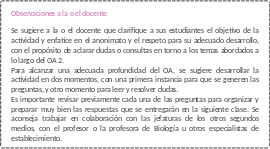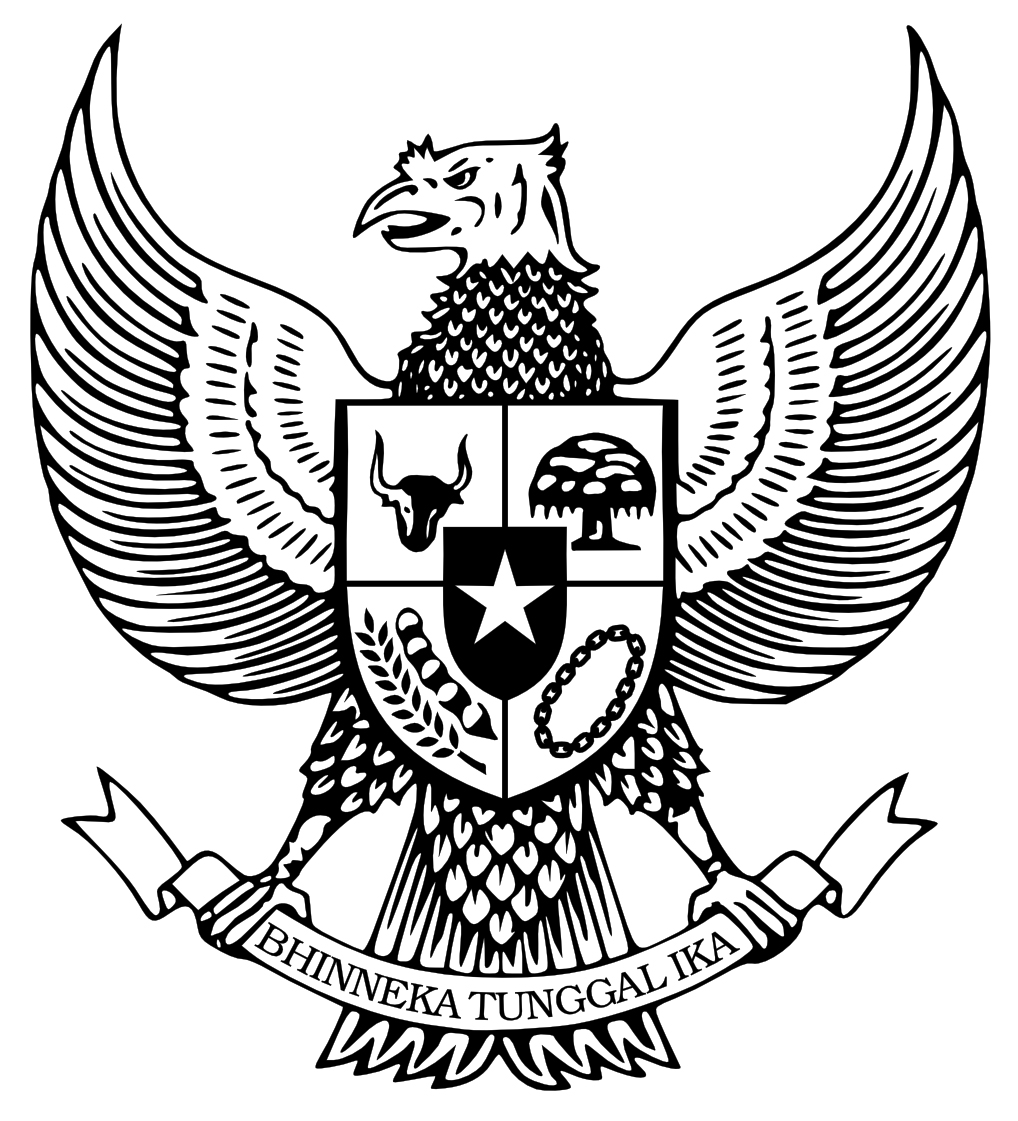TEACHER TRAINING FOR CONTENT AND LANGUAGE INTEGRATED LEARNING1 JARMILA
BIRDBRAIN TEACHER’S NOTES © ADT 2004 COMPILED BYDEAR PRESCHOOL OR KINDERGARTEN TEACHER WELCOME TO
PERSON SPECIFICATION CLASS TEACHER ESSENTIAL DESIRABLE
PERSON SPECIFICATION CLASS TEACHER 2018 ESSENTIAL DESIRABLE
SCU TEACHER EDUCATION PROGRAM PROFESSIONAL DISPOSITIONS OF
TEACHER RECRUITMENT DIFFICULTY CENSUS FREQUENTLY ASKED QUESTIONS
Content and Language Integrated Learning (CLIL)
Teacher training for Content and Language Integrated Learning1
Jarmila Novotná, Marie Hofmannová
Charles University in Prague, Faculty of Education
[email protected], [email protected]
Abstract: The paper is focusing on teacher training for Content and Language Integrated Learning (CLIL) in the Czech Republic. The authors are interested in optimal ways of developing professional skills of prospective teachers – useful strategies for teaching mathematics in English to Czech learners.
Introduction
Education has a rich tradition and has always played an important part in Czech history. After 1989 it has been undergoing rapid development. The transition proceeds from demonopolisation to a qualitative diversification of educational opportunities. In foreign language teaching, several new trends can be observed in Czech schools of today. One of them is Content and Language Integrated Learning (CLIL). The approach relates to European Commission document on education „Teaching and learning. Towards the learning society” which declares proficiency in three Community languages as a prior objective, and suggests, in a list of methods, teaching content in a foreign language as a way to contribute to achieving this objective.
CLIL aims to create an improvement in both the foreign language and the non-language area competence, general categories being motivational and cognitive impact of the positive attitudes triggered by using CLIL, and the linguistic and methodological utilisation of the non-language content material. It is believed that content, e.g. mathematics, and a foreign language, e.g. English, can be better developed through gradual interplay (25 – 100 % of the content is taught in a foreign language).2 (Pavesi et al., 2001)
In the second half of 1990’s CLIL was introduced to a limited number of upper school schools in the Czech Republic. Up to six content subjects are taught in a foreign language, e.g. German, Spanish, French, Italian, English, or Russian. For successful implementation of the programme to schools, special attention needs to be paid to the development of appropriate – CLIL specific – teacher competences.
2. CLIL teacher competences
The teacher competence in general seems to cover the subject knowledge and skills and their application. What attitudes, what professional skills are to be acquired for the teaching of mathematics through the medium of the English language?
Language/communication-based competences
Whereas in an English class, communicative competence is the ultimate aim of teaching, and involves both accuracy and fluency, the main aim of mathematics teaching is to develop mathematical thinking. Learning mathematics includes „appropriating ways of speaking mathematically, that is, learning the language of mathematicians” (Zazkis, 2000). In schools the mathematical language comprises both formal and informal components.
CLIL teachers should therefore have a good command of the target language and resort to the learners’ mother tongue with care. For learners, however, code switching is a natural communication strategy, and teachers should allow it, particularly in the first stages of CLIL. Teachers’ task is to flexibly adapt their instructional support bearing in mind that in order to enable incidental language learning, i.e. language acquisition in the learners, their main concern should be to scaffold them on their way towards achieving mathematical competences. Learners, whose attention is focused on the non-linguistic content, need to have access to spontaneous speech, preferably in an interactive context.
Methodology-based competences
The teacher’s task is to enable the students develop their individually different process of knowledge building and meaning construction as well as positive attitudes (De Corte, 2000). It is a common belief that mathematics and languages are difficult subjects. Therefore, in order to help the learners succeed, it is of the utmost importance for the teacher to examine and analyse possible barriers that might have a negative impact on learning. The CLIL teacher should be able to suggest ways how these could be minimised and use a variety of effective teaching strategies that would help overcome individual learning difficulties.
Class management competences
The teacher’s task is to identify and use dual-focused activities which simultaneously cater for language and content aspects. From the point of view of class management, a qualified CLIL teacher should be able to decide whether teaching the whole class, groups, pairs, or individuals is appropriate for particular learning purposes, should be able to maintain learners´ interest and motivation through relevant learning opportunities, and to consider time management.
3. Consequences for teacher education
At Charles University in Prague, Faculty of Education, student-teachers involved in five-year pre-service diploma courses combine two majors in their studies. Traditionally, mathematics teaching could be combined with e.g. chemistry, technology, biology, physical education, etc., recently also with foreign language teaching. The graduates obtain dual qualification, e.g. for teaching English as a foreign language and mathematics in Czech. Their qualification applies for secondary schools, i.e. for learners aged 11-19.
The authors believe that teacher training must be tailored to meet the specific needs of CLIL instruction which involve not only teaching strategies, but also school curriculum development and reform. The present teaching qualification (mathematics in Czech and English as a foreign language) does not suffice the new needs.
Since the school year 1999/2000, the Department of Mathematics and the Department of English language and literature of Charles University in Prague, Faculty of Education, has run a special optional course whose aim is to give students involved in pre-service teacher education insight into both theoretical and practical aspects of CLIL, i.e. to extend teacher education and provide its graduates with enhanced qualifications – teaching mathematics in English.3 The course covers language and cultural preparation, classroom observations, microteaching of peers with the use of innovative teaching methods and approaches, and a variety of related activities. (Novotná, Hadj-Moussová & Hofmannová, 2001)
The CLIL course develops the participants’ knowledge and skills in English for further use in the teaching of mathematics, knowledge and skills in mathematics through the L2, use of reciprocal teaching strategies with regard to students’ individual differences. The course encourages the interaction of the L1, L2 and L3, and pays attention to the differences in the teacher’s work, i.e. teaching mathematics in the L1 and in the L2. (Novotná & Hofmannová, 2002)
In CLIL teacher training programme, the following items are substantial: interaction of the three languages L1, L2, L3 during teaching mathematics in L2 with attention paid to advantages, disadvantages and possible problems that might occur, and differences in the work of a mathematics teacher when teaching in L1 and L2.
Course organisation
The two-semester pre-service teacher-training course is aimed at students from the third year of their studies.4 It takes a form of a seminar, two 45-minute teaching units per week, with many activities run as a workshop. The course covers:
graded lesson observation with the aim to master subject specific vocabulary and classroom teacher talk, and to elaborate observation sheets focused on teacher talk and classroom interaction,
plenary discussion based on participants’ experience and observation sheets,
participants’ individual or group work with a variety of textbooks and teaching materials suitable for CLIL in comparison with similar materials in the mother tongue (L1); attention is paid to possible obstacles based partly on L1 and L2 interference and partly on the relation of the content matter and background knowledge of the target language community,
preparing short teaching sessions - lesson stages, e.g. presentation, practice,
micro-teaching of peers with immediate feedback, which takes the form of analysis and discussion,
teaching at a selected school where CLIL has been introduced,
assessment and analysis with the school and university supervisors.
The course was originally designed for teacher training of prospective teachers of mathematics and English language. It is run in English. Regardless of this fact, student teachers of other non-language subjects and foreign languages participate. This feature enriches the course in the multilingual perspective.
4. Example of course activities - microteaching of peers (team teaching)
One of the requirements for successful course completion is to prepare and execute one stage of a mathematics lesson conducted in English. This is done as a microteaching of peers from the very outset of the course. We believe that this is the way how course participants can best acquire basic professional, i.e. teaching skills. Peer teaching episodes are limited and take from 5 to 20 minutes. They are graded starting from simple game-like activities suited for the beginning of the class, to the complex, team teaching where two student teachers perform the presentation and practice stage of the lesson. As a follow-up they are analysed in the whole group discussion. The reflection on the teaching experience is carried out in either English or Czech for all the participants to be better able to express their attitudes, opinions and feelings. The lesson stages are also video recorded for the purposes of research.
Throughout the course, the stress is being put on the learners’ comprehension for the future teachers to learn how to adapt their teaching styles towards the use of interactive strategies. In their teaching practice, they will need to use a variety of verbal and non-verbal means to illustrate the meaning, such as repetition, rephrasing, gestures, body language, exemplification, analogies, representation and visualisation. Explanation should be accompanied with the use of visual and multimedia aids. At early stages, emphasis is on the development of receptive skills. The use of L1 should be the last resort.
In (Naves, 2002), successful CLIL programme teaching strategies are summarised: Teachers exhibit active teaching behaviours such as clearly giving instructions, accurately describing tasks, maintaining learners' engagement in instructional tasks by maintaining task focus, pacing instruction appropriately, and communicating their expectations for students' success. In presenting new information, they use appropriate strategies such as demonstrating, outlining, using visuals, building redundancy, rephrasing, scaffolding, linking new information to learners' previous knowledge, etc. to make input comprehensible and context-embedded.
References
Barwell, R. (2001). Investigating Mathematical Interaction in a Multilingual Primary School: Finding a Way of Working. In: Proceedings PME 25, Volume 2. Ed. M. van den Heuvel-Panhuizen. Freudenthal Institute, Utrecht University: 97-104.
De Corte, E. (2000). Marrying Theory Building and the Improvement of School Practice: A Permanent Challenge for Instructional Psychology. Learning and Instruction 10: 249-266.
Czarnocha, B. – Prabhu, V. (2000). The Flow of Thought Across the Zone of Proximal Development Between Elementary Algebra and Intermediate English as a Second Language. In: Proceedings PME 24, Volume 2. Ed. T. Nakahara, M. Koyama. Hiroshima University: 201-208.
Khisty, L.L. (2001). Effective Teachers of Second Language Learners in Mathematics. In: Proceedings PME 25, Volume 3. Ed. M. van den Heuvel-Panhuizen. Freudenthal Institute, Utrecht University: 225-232.
Kubínová, M. – Mareš, J. – Novotná, J. (2000). Changing Teaching Methods in School Mathematics, An Analysis of Some Episodes from Classes. In: Proceedings PME 24, Volume 3. Ed. T. Nakahara, M. Koyama. Hiroshima University: 183-190.
Marsh, D. (2000). Using languages to learn and learning to use languages. Eds. D. Marsh – G. Langé. Finland: University of Jyväskylä.
Modern Languages: Learning, Teaching, Assessment. A Common European Framework of Reference, 1998, Strasbourg, Council of Europe.
Moschkovich, J. (2002). A Situated and Sociocultural Perspective on Bilingual Mathematics Learners. Mathematical Thinking and Learning, 4(2&3): 189-212.
Naves, T. (2002). What Are the Characteristics of Successful CLIL Programmes? In: TIE-CLIL Professional Development Course. Ed. G. Langé. Milan: M.I.U.R.: 91-94.
Novotná, J. – Hadj-Moussová, Z. – Hofmannová, M. (2001). Teacher training for CLIL – Competences of a CLIL teacher. In: Proceedings SEMT 01. Eds. J. Novotná, M. Hejný. Praha: Univerzita Karlova, Pedagogická fakulta: 122-126.
Novotná, J. – Hofmannová, M. (2002). Nový vzdělávací přístup – CLIL. Integrace jazykové a odborné aprobace v pregraduální přípravě učitelů. In: Sborník z Celostátního setkání kateder připravujících učitele matematiky. Ed. M. Kubínová. Praha: Univerzita Karlova v Praze, Pedagogická fakulta: 59-63. (In Czech.)
Pavesi, M. – Bertocchi, D. – Hofmannová, M. – Kazianka, M. (2001). CLIL Guidelines for Teachers. Milan: TIE CLIL.
Reviews of National Policies for Education. Czech Republic. OECD 1996.
Skutnabb-Kangas, T. (1981). Bilingualism or Not: The Education of Minorities.Clevedon, Multilingual Matters.
Švec, V. (1998). Pedagogické vědomosti a dovednosti – jádro pedagogických kompetencí. Pedagogická orientace, 4.
Vygotsky, L.S. (1986). Thought and Language. Cambridge, MA: The MIT Press.
Zazkis, R. (2000). Using Code-Switching as a Tool for learning Mathematical Language. For the Learning of Mathematics, 20, 3: 38-43.
1 Acknowledgement: The research was supported by the projects GAČR 406/02/0809 Language Forms and Their Impact on the Cognitive Processes Development
2 In the following text, L1 means the mother tongue (Czech), L2 the foreign language (English), L3 the language of the content area (mathematics).
3 In 1999-2001, the authors were involved in the European Socrates Lingua A project TIE-CLIL – Translanguage in Europe, Content and Language Integrated Language. The major aim of TIE-CLIL was to provide pre- and in-service development programmes in CLIL for language teachers and subject teachers through building on existing knowledge of this field, to provide state-of-the-art understanding of theory and practice. One of the outputs of the project is the book Langé, G. (Ed.). TIE-CLIL Professional Development Course. Milan: M.I.U.R. 2002, designing modules for CLIL teacher training.
4 It is easily adaptable for the in-service teacher training.
(TEACHERS’ SHARING) DRESS SENSE AND APPRECIATION OF FASHION AIMS
0 CADET TEACHER ACADEMY CADET TEACCADETHER ACADEMY CADET TEACHER
1 ST MARCH BRATISLAVA DEAR MY ENGLISH TEACHER I
Tags: content and, europe, content, training, jarmila, content, integrated, learning1, teacher, language
- ARTICLES OF FACULTY ORGANIZATION COLLEGE OF SCIENCE & HEALTH
- UNIFORM COMMERCIAL CODE (UCC) BULK ORDER FILE LAYOUTS (REV
- 11 GOVERNMENT OF KARNATAKA KARNATAKA STATE FIRE & EMERGENCY
- SCHOOL VOOR SCHOONHEIDSZORGEN « DENISE GRÉSIAC » VERENIGING ZONDER
- OPEN SOURCE APPLICATIONS AND STANDARDS PART OF THE ANNUAL
- SPORTELLO DI ORIENTAMENTO SCOLASTICOFORMATIVO PER GIOVANI STRANIERI TIPOLOGIE DI
- IMPROVING RELIABILITY AND SENSITIVITY OF A LASER SNOW DEPTH
- STATE AND PROVINCIAL PSYCHOLOGICAL ASSOCIATIONS ALABAMA PSYCHOLOGICAL ASSOCIATION (334)
- PHÂN CÔNG ĐIỀU HÀNH KỲ HỌP THỨ V KHOÁ
- PRESIDENTIAL ELECTION 2004 BUSH VS KERRY INTRODUCTION THERE IS
- LEI Nº 8429 DE 2 DE JUNHO DE 1992
- NZQA UNIT STANDARD 19517 VERSION 5 PAGE 3 OF
- ORDER OF THE MINISTER OF ECONOMIC AFFAIRS DATED 16
- REFEREE REPORT (FOR RESEARCH MASTERS AND PHDS ONLY)
- 195 DOCUMENT TYPE DEFINITIONS (DTDS) CREATING A DOCUMENT TYPE
- ZĽAVNENÉ JAZYKOVÉ KURZY KTORÉ PONÚKAJÚ JAZYKOVÉ ŠKOLY V TALIANSKU
- CERTIFICADO DE CUMPLIMIENTO DE REQUISITOS REACH PARA CENTRALES NUCLEARES
- DECRETO POR EL QUE SE DECLARA ÁREA NATURAL PROTEGIDA
- ASSMANN J & BAUMGARTEN AI (2001) REPRESENTATION IN RELIGION
- 25 AUGUST 6TH TRANSFIGURATION OF OUR LORD VESPERS WE
- S Ą D R E J O N O
- B IRTHTOSIX INITIATIVE POST TEST FOR THE PURPOSES OF
- PRESSURE ULCERS CHAPTER 89 PHARM 2013 HP RECOMMENDED FLAGS
- ALS HET BUITEN KOUDER ISS IS DE WINTER VOOR
- MINISTARSTVO POLJOPRIVREDE 1244 NA TEMELJU ČLANKA 84 STAVKA 3
- KL 7 12 BÓG W ŻYCIU ŚW RAFAŁA
- PLEN 5 JOM (WWWJOORTNERAT) DAF FRAGEN UND ANTWORTEN BITTE
- MODEL VERKLARING OP EER DEMINIMISSTEUN IN DE LANDBOUWSECTOR (PRIMAIRE
- INSCRIPCIÓN DE EMPLEADORES 1 QUÉ ES INSCRIPCIÓN DE EMPLEADORES?
- PRIMER PARCIAL DE LIGUÍSTICA (LETRAS) BASUALDO RAUL ALBERTO CARABAJAL
DESCRIZIONE TARIFFA SCADENZA CORRISPETTIVO PER L’ISCRIZIONE ANNUALE RESIDENTI A
OPĆINA PUNITOVCI OBRAZAC ZAHTJEVA ZA DODJELU STUDENTSKE STIPENDIJE –
ZATWIERDZAM DYREKTOR WOJSKOWEGO INSTYTUTU WYDAWNICZEGO MAREK SARJUSZWOLSKI REGULAMIN UDZIELANIA
 VYSVĚDČENÍ O PRÁVNÍ ZPŮSOBILOSTI K UZAVŘENÍ MANŽELSTVÍ
VYSVĚDČENÍ O PRÁVNÍ ZPŮSOBILOSTI K UZAVŘENÍ MANŽELSTVÍ A SZAKMAI GYAKORLAT OKTATÁSÁNAK MÓDSZERTANA II ELŐADÁS 1 A
 ALICIA VAZQUEZ GEA CIEZA 12 AGOSTO 1998 ENTRENADOR
ALICIA VAZQUEZ GEA CIEZA 12 AGOSTO 1998 ENTRENADOR T C GÜMÜŞHANE ÜNİVERSİTESİ YAPI İŞLERI TEKNIK DAIRE BAŞKANLIĞI
T C GÜMÜŞHANE ÜNİVERSİTESİ YAPI İŞLERI TEKNIK DAIRE BAŞKANLIĞIIME I PREZIME POLAZNIKACE NAZIV POSLODAVCA MJESTO
 MINNESOTA DIRECTORS OF NURSING ADMINISTRATIONLONG TERM CARE DEAR FRIENDS
MINNESOTA DIRECTORS OF NURSING ADMINISTRATIONLONG TERM CARE DEAR FRIENDSTEMPLATE FOR HM TREASURY APPROVAL FOR SPECIAL SEVERANCE CASES
REQUEST FOR WAIVER OF THE REQUIREMENT TO DOCUMENT THE
 ORIENTACIÓN 2° MEDIO UNIDAD 1 OA2
ORIENTACIÓN 2° MEDIO UNIDAD 1 OA2  A MATEMÁTICAS PARA ECONOMISTAS I MATEMÁTICAS EMPRESARIALES (MÓDULO PRÁCTICO)
A MATEMÁTICAS PARA ECONOMISTAS I MATEMÁTICAS EMPRESARIALES (MÓDULO PRÁCTICO) GROUP 5 IPOST DOCUMENT TITLE BIG LOTTERY FUND –
GROUP 5 IPOST DOCUMENT TITLE BIG LOTTERY FUND – SEITE 11 ALLGEMEINE HINWEISE ZUM MUSTERAUSBILDUNGSVERTRAG STUDIUM MIT
SEITE 11 ALLGEMEINE HINWEISE ZUM MUSTERAUSBILDUNGSVERTRAG STUDIUM MITPOVERTYENVIRONMENT INTERACTIONS IN AGRICULTURE KEY FACTORS AND POLICY IMPLICATIONS
 4 SAMBUTAN GUBERNUR KALIMANTAN TIMUR PADA ACARA PELANTIKAN ASOSIASI
4 SAMBUTAN GUBERNUR KALIMANTAN TIMUR PADA ACARA PELANTIKAN ASOSIASISTUDENT NAME SCIENCE TEACHER NAME STRAND 1
2 TRANSLATED VERSION AS OF JUNE 3 2014 READERS
 INTENT TO APPLY FOR INSTITUTIONAL ACCREDITATION SPONSORING INSTITUTION (THE
INTENT TO APPLY FOR INSTITUTIONAL ACCREDITATION SPONSORING INSTITUTION (THE